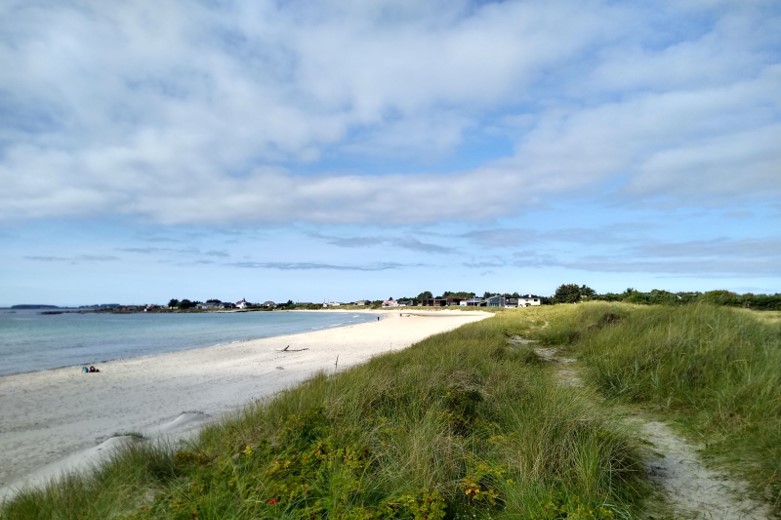200 attendees will gather in Stavanger and Oslo over the next two days to listen to talks from all the key players operating on the Norwegian Continental Shelf during the Exploration Revived Conference organised by the Norwegian Petroleum Society. The most interesting exploration wells recently drilled will be discussed and presented, including hot shots such as Stangnestind, Stovegolvet and Blasto. An event which marks the first time for many people to be able to meet again physically, there is a sense of positivity that things are gradually getting back to normal.
Core viewing
Last night, an ice-breaker took place, which included – of course – a core viewing. About 100 conference attendees mingled to observe and discuss Cretaceous, Jurassic and a very particular hydrothermal facies as seen in cores from wells from the North Sea and Norwegian Sea. It was a reminder of the importance of looking at the rocks and hearing different views on how they were deposited.
A particular highlight of the core viewing was being able to see the contact between the Triassic and basement in one of Mol’s Iving wells. As the picture below shows, the reddish slabs on the left represent the typical fluvial facies of the Triassic, underlain by about three metres of weathered basement. The transition to more intact, yet fractured basement is indicated by the black line.

Brecciated trachyte
Another very particular core on display was a brecciated trachyte cored in a well in the Norwegian Sea. As the company representative explained during the session, it was never the intention to cut core from a deposit like this, but since the the white bits of rock were interpreted as carbonates, the decision was made to have a closer look.

Lysing Formation
A slightly more conventional section, but still full of interesting phenomena, was laid out from the Upper Cretaceous Lysing Formation in the Norwegian Sea. Thought to be deposited in a deltaic to deep water setting, the sands and mudstones show a wide array of bioturbation features, mudstone drapes and other complex depositional building blocks, leading to lively discussions on what all the features observed could represent.

More news to be followed, the conference is about to kick off!
HENK KOMBRINK





